With their bright red color, lobster mushrooms are one of the most striking fungi in the woods. Theyre an edible wild mushroom with a subtle shellfish flavor thats easy to identify with no look alikes. Ive been hunting and cooking them for over a decade. I’ll tell you everything you need to know about them in the kitchen and the woods in this post.
Lobster mushrooms are one of the most delightful culinary discoveries I’ve made in my journey with foraged foods Their unique flavor and texture make them an incredible addition to pasta, risotto, soups and more. But to truly enjoy lobster mushrooms, you need to know how to properly prepare them
In this detailed guide, I’ll walk you through everything you need to know about making lobster mushrooms, from identification and harvesting to cleaning, cooking and storage. With my tips and techniques, you’ll be able to elevate your home cooking with this fantastic fungus. So let’s get started!
What Are Lobster Mushrooms?
First things first – what exactly are lobster mushrooms? They’re actually not a distinct mushroom species Lobster mushrooms form when a parasite called Hypomyces lactifluorum infects certain types of Russula or Lactarius mushrooms
This parasite causes dramatic changes in the mushroom’s appearance and flavor. The normally reddish mushroom flesh transforms into a bright orange-red color that resembles the shell of a cooked lobster – hence the name “lobster mushroom.”
The parasite also gives the mushroom a sweeter, seafood-like aroma and taste. So while they look like a lobster, lobster mushrooms aren’t related to shellfish at all – they’re 100% fungi!
When and Where to Find Lobster Mushrooms
Lobster mushrooms grow during summer and fall across North America, especially in the Pacific Northwest and Midwest regions. They’re most often found in coniferous or mixed wood forests.
Look for them growing on the ground near trees like pine, birch, oak and aspen. They like shady, moist areas with plenty of fallen leaves or needles.
The exact timing of the lobster mushroom season varies by location. In general, they start popping up in mid to late summer and grow until early winter. I’ve had the best luck finding them from August through October here in Minnesota.
Foraging for lobsters does take some patience and persistence. Keep your eyes peeled during woodland hikes and you may just spot a flash of red on the forest floor!
Identifying Lobster Mushrooms: What to Look For
Lobster mushrooms stand out in the forest thanks to their brilliant vermilion color. But it’s still important to positively identify them since they have some dangerous lookalikes. Here are the key features to look for:
-
Bright red/orange color – The red hue can range from bright cherry red to a deeper orangey red.
-
Dense, firm flesh – Press the mushroom gently. It should feel solid, not soft or hollow.
-
Smooth, moist texture – The outside will look slick and somewhat slimy when wet.
-
Thick, stubby stem – The stem is the same color as the cap and usually quite short.
-
Vase, rosette or irregular shape – The caps can be cup-like, round, or lobed and wavy.
-
Mild seafood aroma – Take a whiff of the mushroom. It should smell mildly fishy or like shellfish.
Any mushroom matching this description is safe to harvest. Just avoid anything with gills, pores or other cap features besides a smooth surface.
Harvesting Perfect Lobster Mushrooms
When you find a group of prime lobster mushrooms, how do you pick the best ones? Here are my tips for harvesting mushrooms that will shine in your kitchen:
-
Look for mushrooms that are firm and dense, not lightweight or squishy. They should feel heavy, like a little paperweight.
-
Choose mushrooms with bright, vibrant color. Dull brown or purple-ish ones are past their prime.
-
Opt for medium or large mushrooms around 2-6 inches wide. Tiny ones won’t yield much.
-
Avoid mushrooms with dots of white mold, brown spots or black ooze. This indicates rot.
-
Bring along a brush and basket to gently clean off debris as you forage.
-
Use a knife to cut mushrooms off at the base instead of pulling and risking damage.
-
Plan to pick only about 25% of the mushrooms in a given area. Leave the rest to spore!
How to Clean and Store Lobster Mushrooms
Preparing lobster mushrooms starts with a thorough cleaning. Give them a quick rinse or brush off any dirt or debris. If they’re extra muddy, a brief soak in cold water won’t hurt. Just pat them very dry immediately after – you don’t want soggy shrooms!
Next, carefully trim off the bottom inch or two of the stem, along with any damaged parts of the mushroom. The stems often hide bugs, dirt and rot, so it’s best to remove them.
You can also slice larger mushrooms in half vertically to inspect and clean out the insides. Scoop out any slimy, worm-eaten or discolored portions with a spoon.
Once clean, store lobster mushrooms in a paper or cloth bag in the fridge. Don’t use plastic bags – they’ll trap moisture and accelerate spoilage. Adding a dry paper towel to the storage bag will help absorb excess moisture.
With ideal storage, fresh lobster mushrooms should keep for 5-7 days in the refrigerator. Don’t worry if the cut surfaces turn a bit brownish. That’s just oxidation and won’t affect the flavor.
How to Prep Lobster Mushrooms for Cooking
Prepping lobster mushrooms for cooking is fast and easy. Just follow these three simple steps:
1. Trim – Using a sharp knife, trim off any remaining tough stem ends or damaged portions.
2. Cut – Slice, tear or chop the mushrooms into bite-sized pieces. They’re quite firm, so take care when cutting.
3. Clean – Give the mushrooms one final rinse or wipe down with a damp towel to remove any lingering dirt or debris.
And that’s it – your lobster mushrooms are ready for the pan! The prep takes less than 10 minutes, even for a few pounds of mushrooms.
Best Cooking Methods for Lobster Mushrooms
Thanks to their firm, dense texture, lobster mushrooms take well to almost any cooking method. My favorite ways to prepare them include:
-
Sautéing – Fry sliced mushrooms in oil or butter over medium-high heat until lightly browned.
-
Roasting – Toss chopped lobsters with oil and roast at 400°F until crispy on the edges.
-
Grilling – Skewer whole caps and grill over a hot fire for delicious charred flavor.
-
Broiling – Place lobster pieces on a sheet pan and broil for 3-5 minutes until browned.
-
Braising – Simmer chunks in broth, wine or sauce until extremely tender.
-
Steaming – Add whole caps to a steamer basket for 5-10 minutes to gently cook.
Experiment with different techniques to find your favorite way of preparing these spectacular shrooms!
Seasoning and Flavoring Lobster Mushrooms
While lobster mushrooms have a naturally sweet, seafood-like flavor, they also take well to all sorts of herbs, spices and seasoning blends. Some of my go-to pairings include:
-
Fresh herbs – thyme, rosemary, tarragon, parsley
-
Spices and chiles – paprika, cumin, cayenne, chipotle
-
Aromatics – garlic, shallots, leeks, onions
-
Citrus – lemon, lime, orange zest
-
Soy sauce, fish sauce, oyster sauce
-
Wine, sherry, Madeira, marsala
-
Butter, olive oil, toasted sesame oil
Let your imagination run wild with global flavors! The briny taste of lobster mushrooms can handle assertive seasonings.
Simple Lobster Mushroom Side Dishes
Looking for easy ways to enjoy lobster mushrooms as a side? Here are a few of my favorite flavorful recipes:
-
Sautéed Lobsters – Fry mushrooms in butter with shallots, thyme and Madeira wine. Finish with a squeeze of lemon.
-
Crispy Roasted Lobsters – Toss sliced mushrooms in olive oil, cumin, paprika and cayenne. Roast at 400°F until browned and crispy.
-
Garlic Lemon Lobsters – Steam or sauté mushrooms, then toss with melted butter, minced garlic, lemon zest and parsley.
-
Lobster Mushroom Fries – Dip chunks in egg wash and panko breadcrumbs. Deep fry until golden brown. Sprinkle with parmesan cheese.
-
Lobster Mushroom Chips – Thinly slice mushrooms and brush liberally with olive oil. Bake in a single layer at 300°F until crispy.
Incorporating Lobster Mushrooms into Main Dishes
Beyond side dishes, lobster mushrooms shine when incorporated into main courses. Their hearty texture stands up to all sorts of proteins and sauces. Try adding

Are Lobster Mushrooms Poisonous?
No, but like other mushrooms, they can make some people very sick and make them throw up or have diarrhea a few hours after eating them. Lobsters are also said to contain some iodine, which could account for some of the fishy aroma. Reactions from people with shellfish allergies have also been reported.
A perfect mushroom should be heavy like a paperweight. If the mushroom feels light like Styrofoam, has a strong fishy odor or dark purple color, theyre too old to eat. Old lobsters also have a reputation for making people sick. On a side note, old purple mushrooms are the best for making lobster mushroom dye.
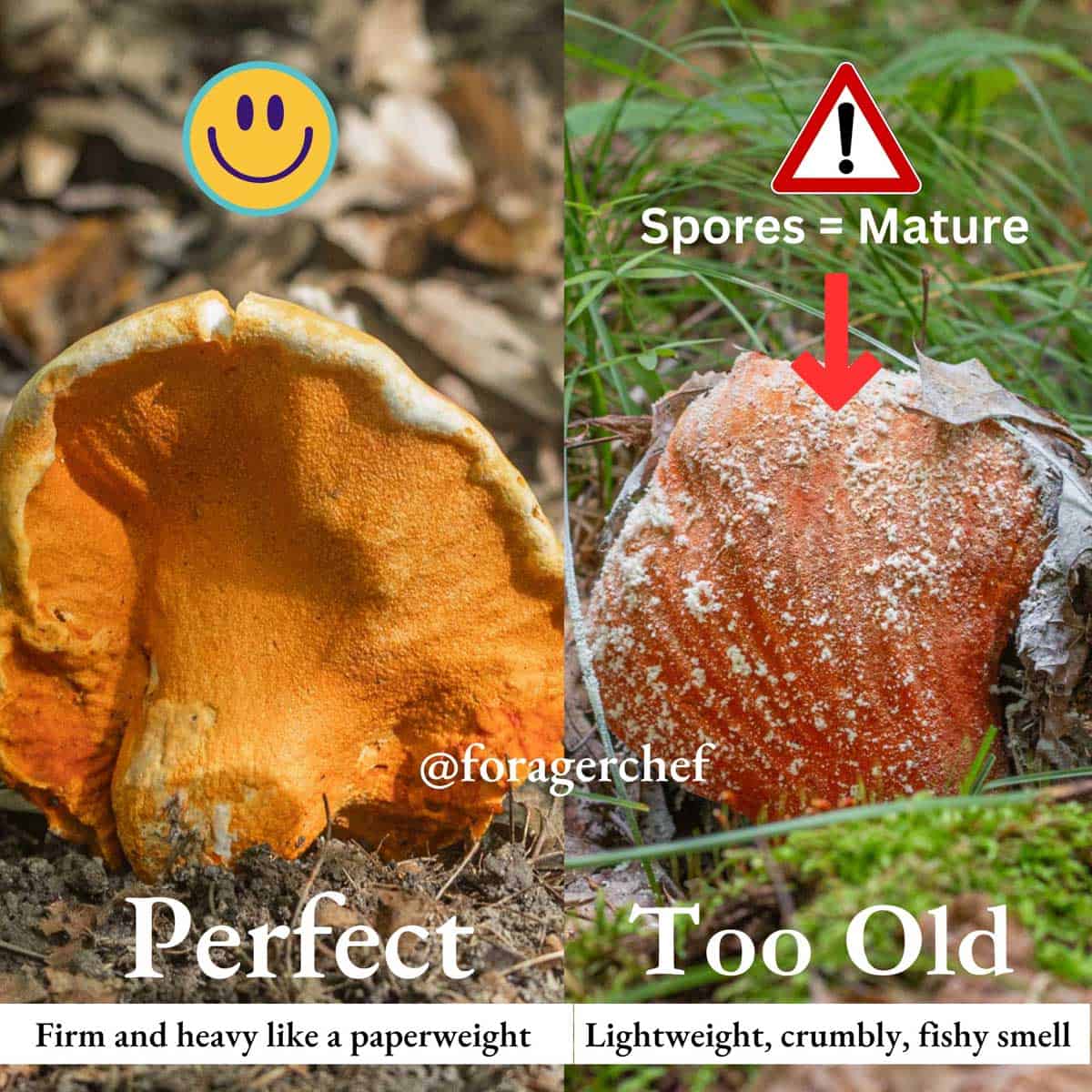
Older mushrooms are good for dehydrating. These are one of the best mushrooms to make into powder.
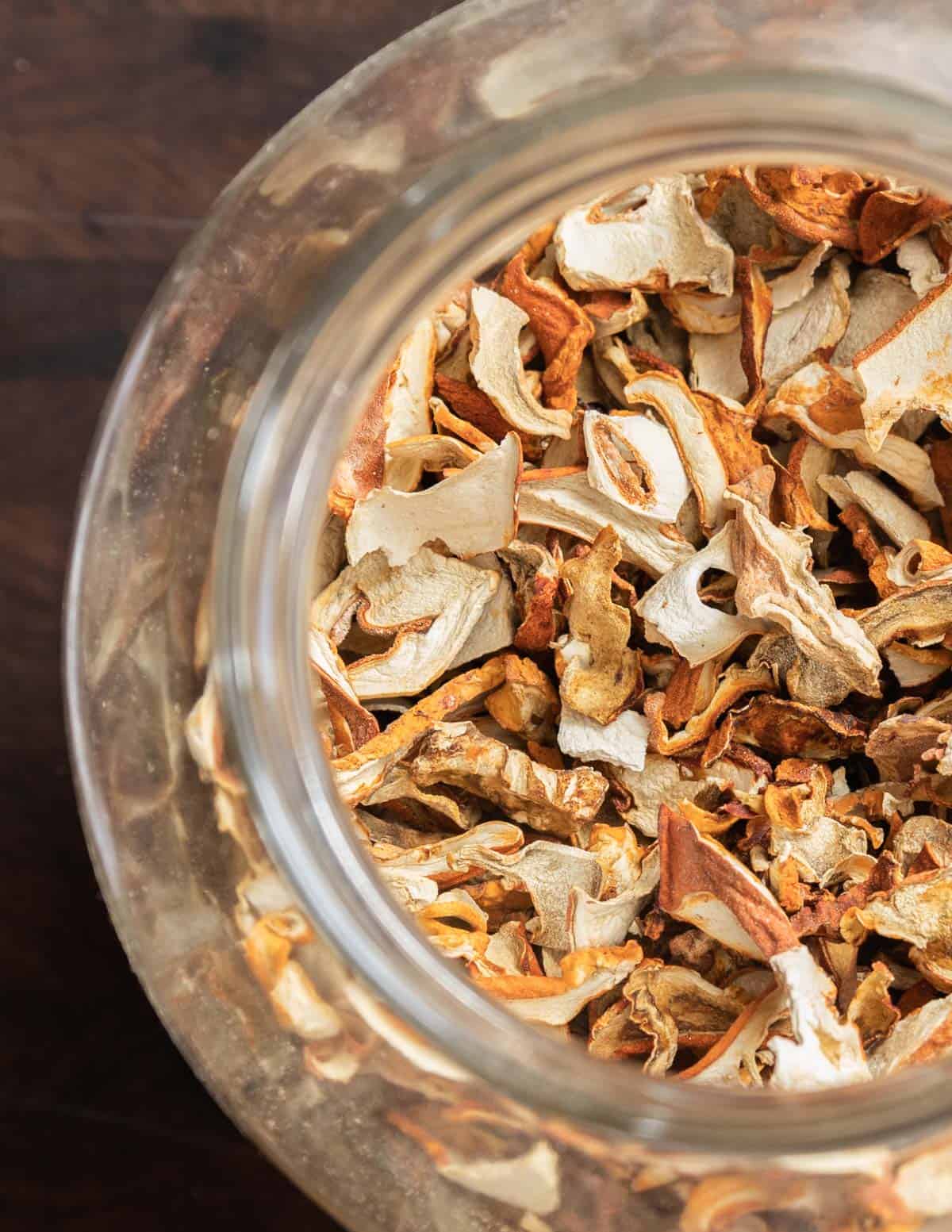
Lobsters can be vase shaped, filled with small creatures, dirt and rainwater. When you pick lobsters, cut off the dirty ends and clean them with a dry brush. Then, use a knife to cut out the middle and any soft tissue.
At home, wash the mushrooms with cold water, then dry on towels. After cleaning, store the mushrooms in a Zip Loc bag with a dry paper towel.
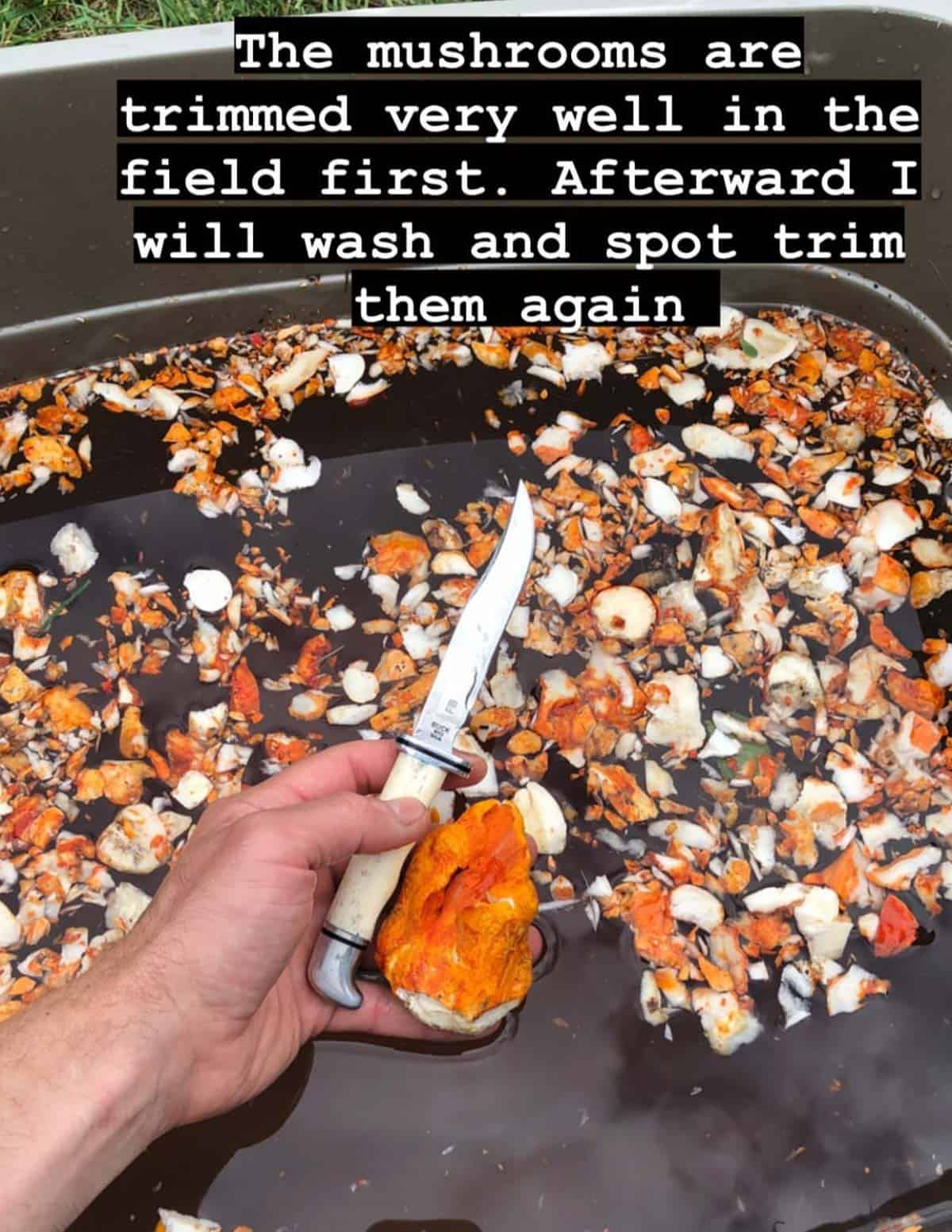
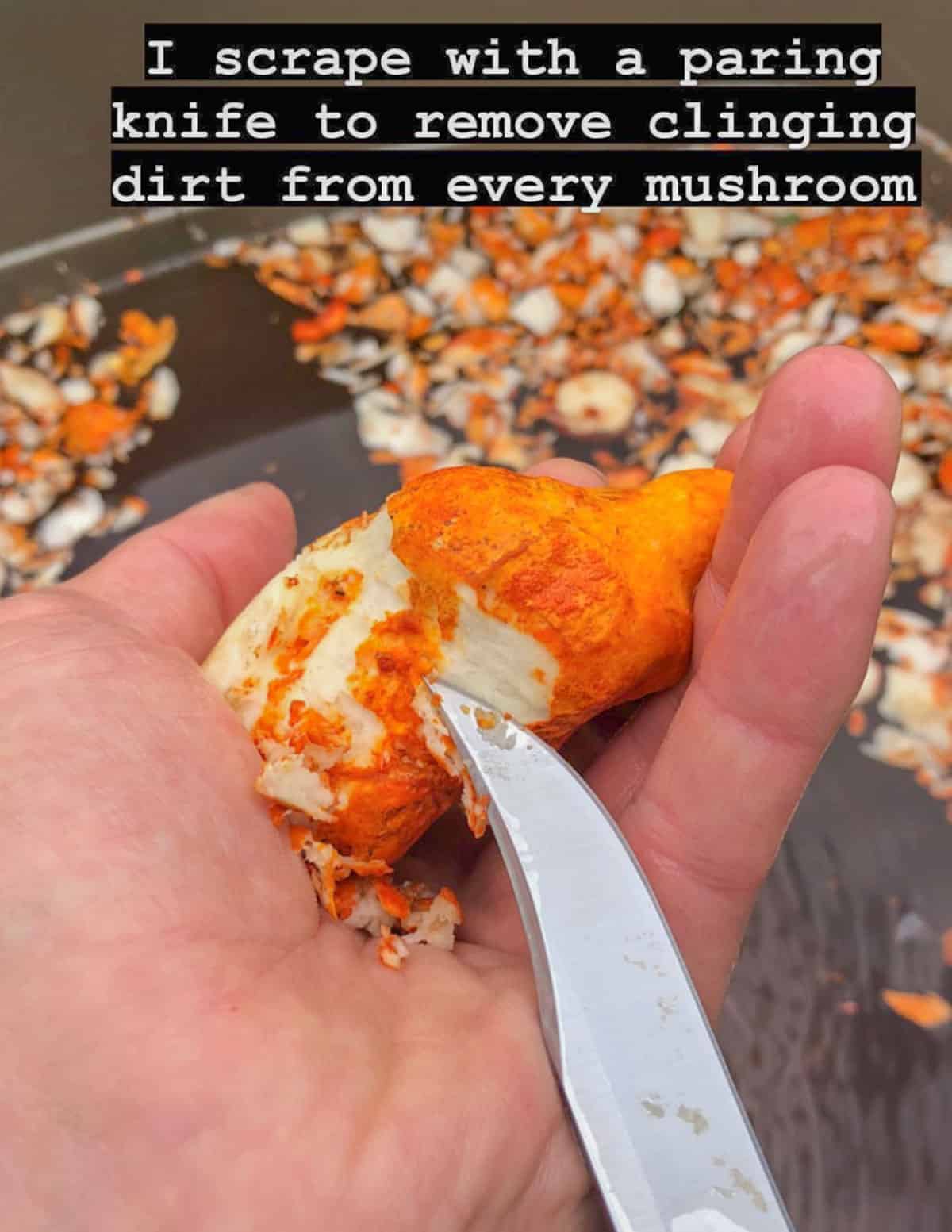
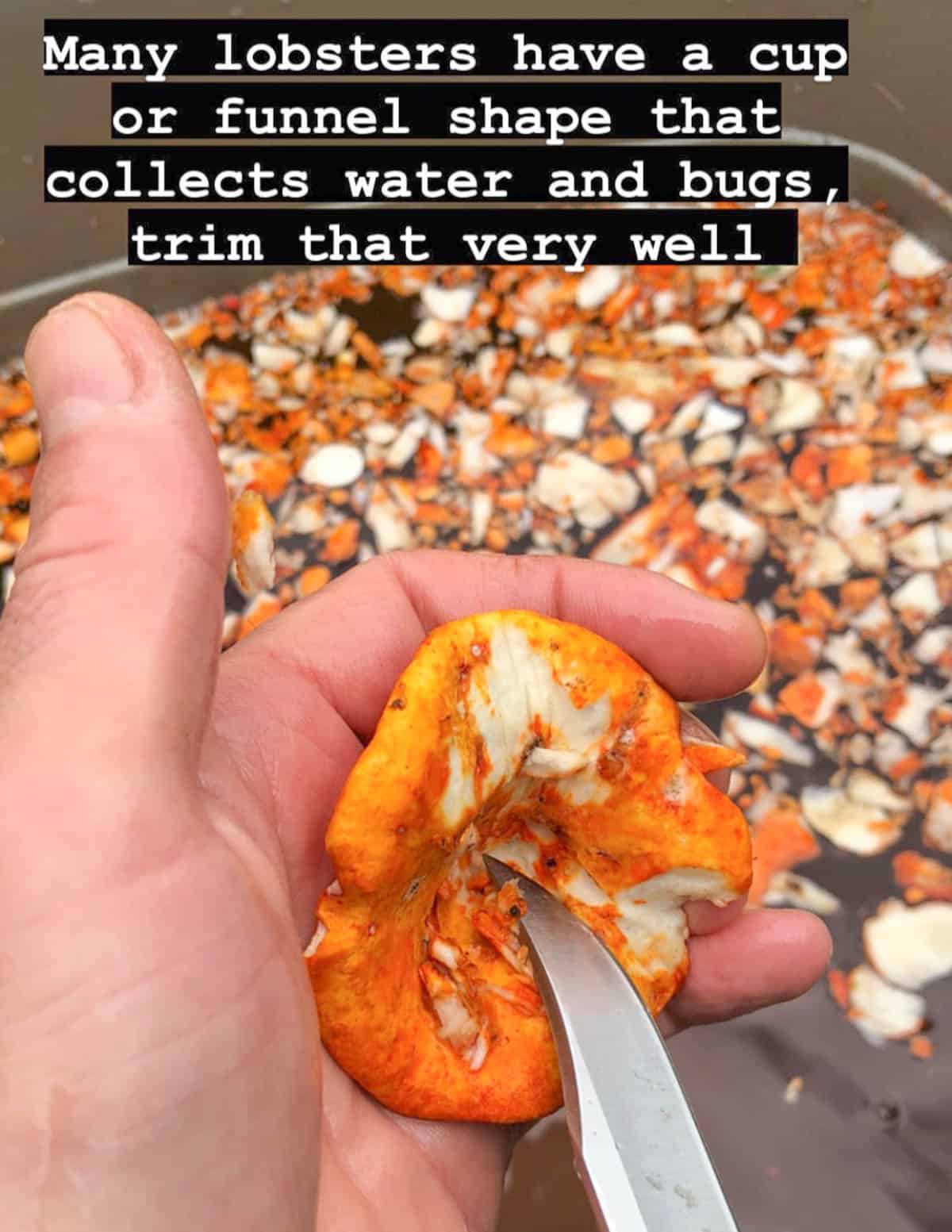

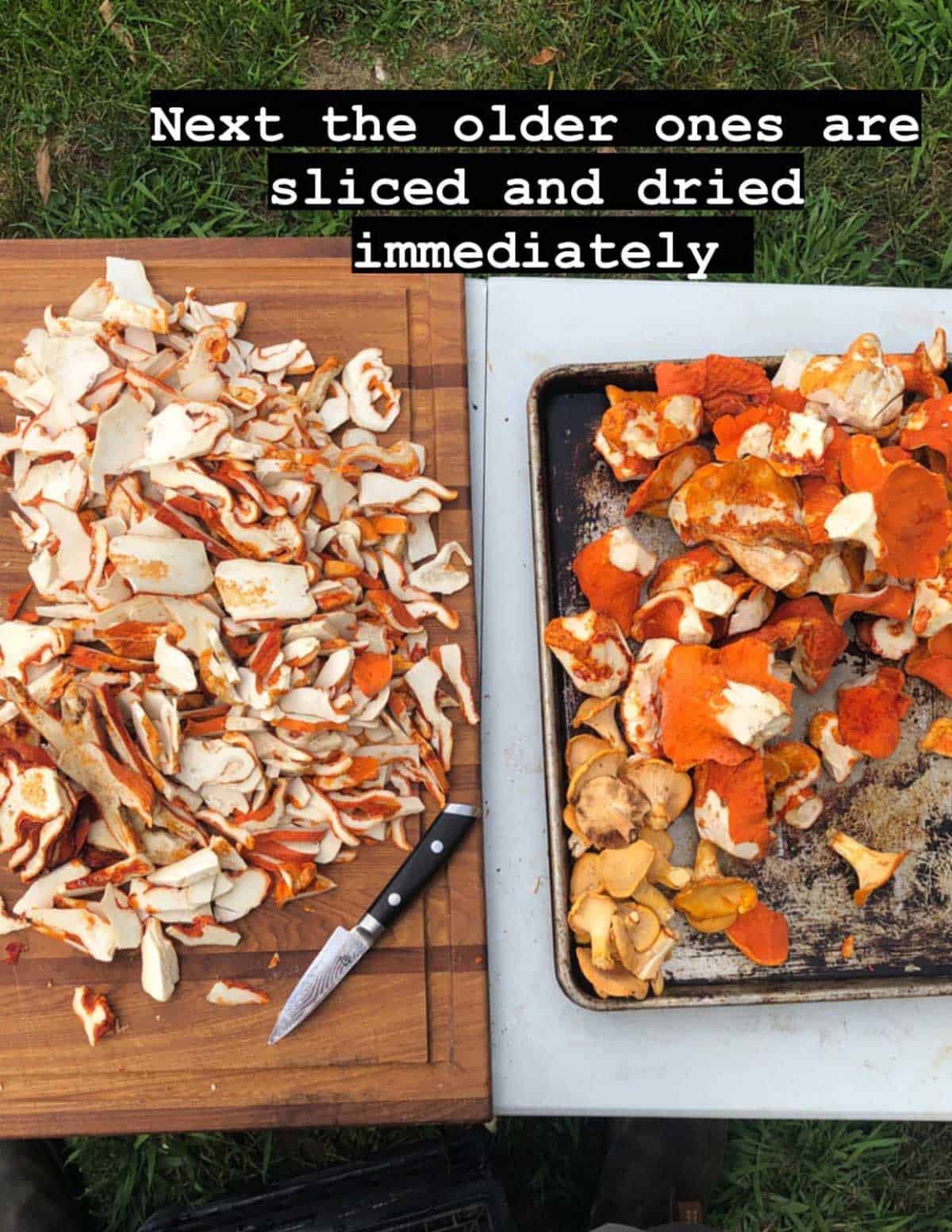

You may run into mushrooms that havent been fully parisitized. As someone who has eaten hundreds of pounds of food and talked to foragers, chefs, and mycologists, I can say for sure that if it looks like a lobster and has Hypomyces on it, it’s edible.
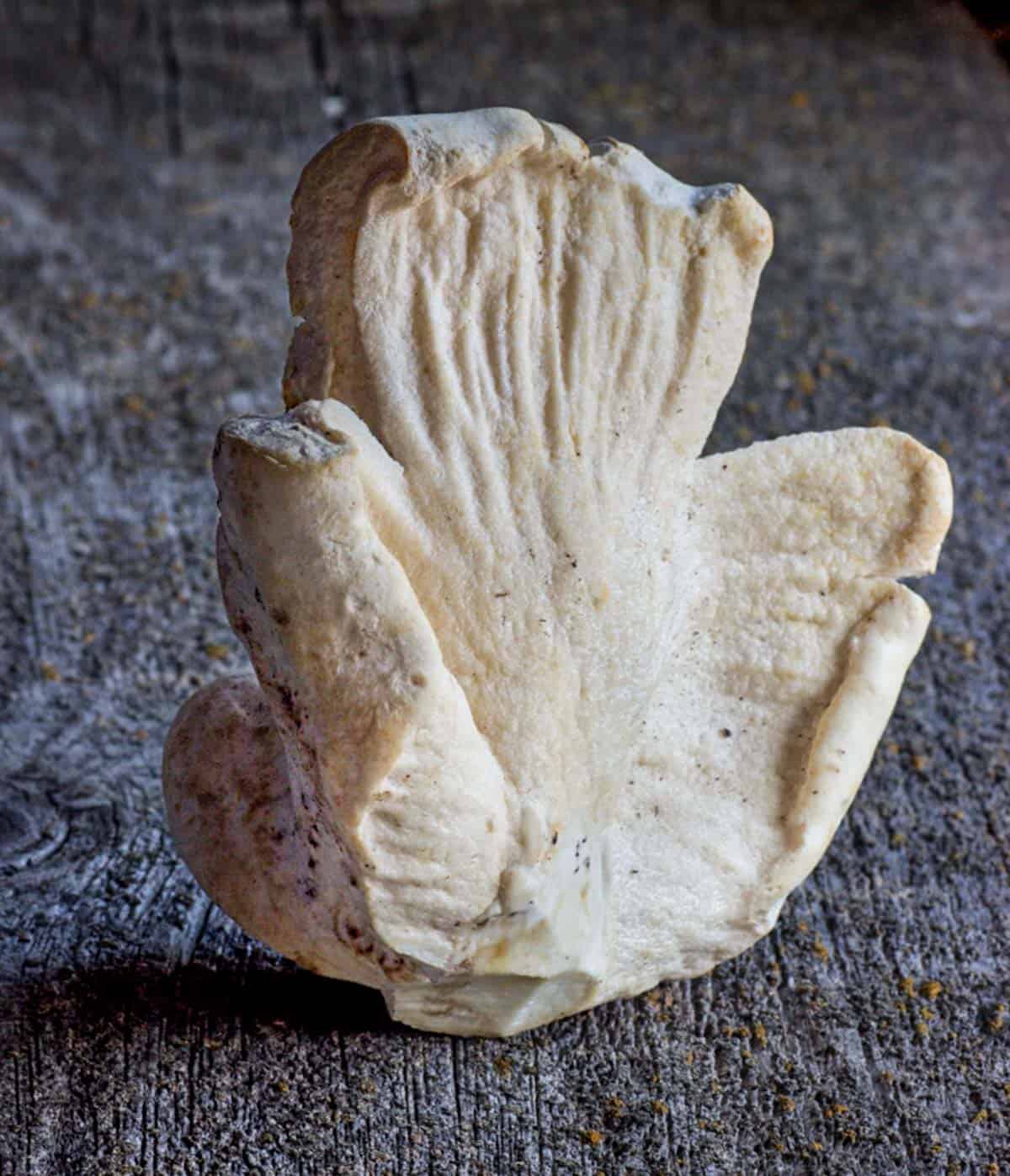
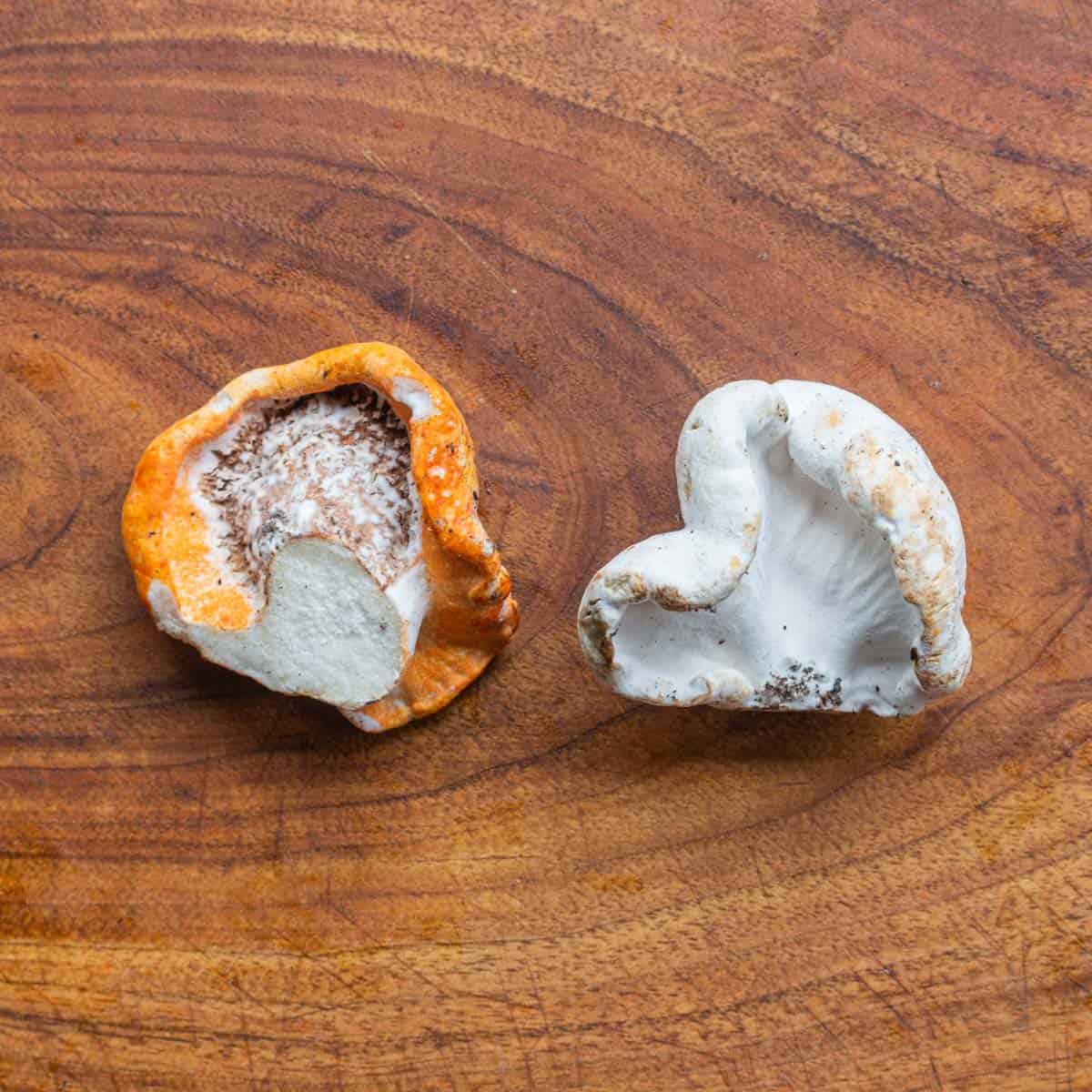
The exception is if the mushroom is half-parasitized, which is extremely rare (see below).
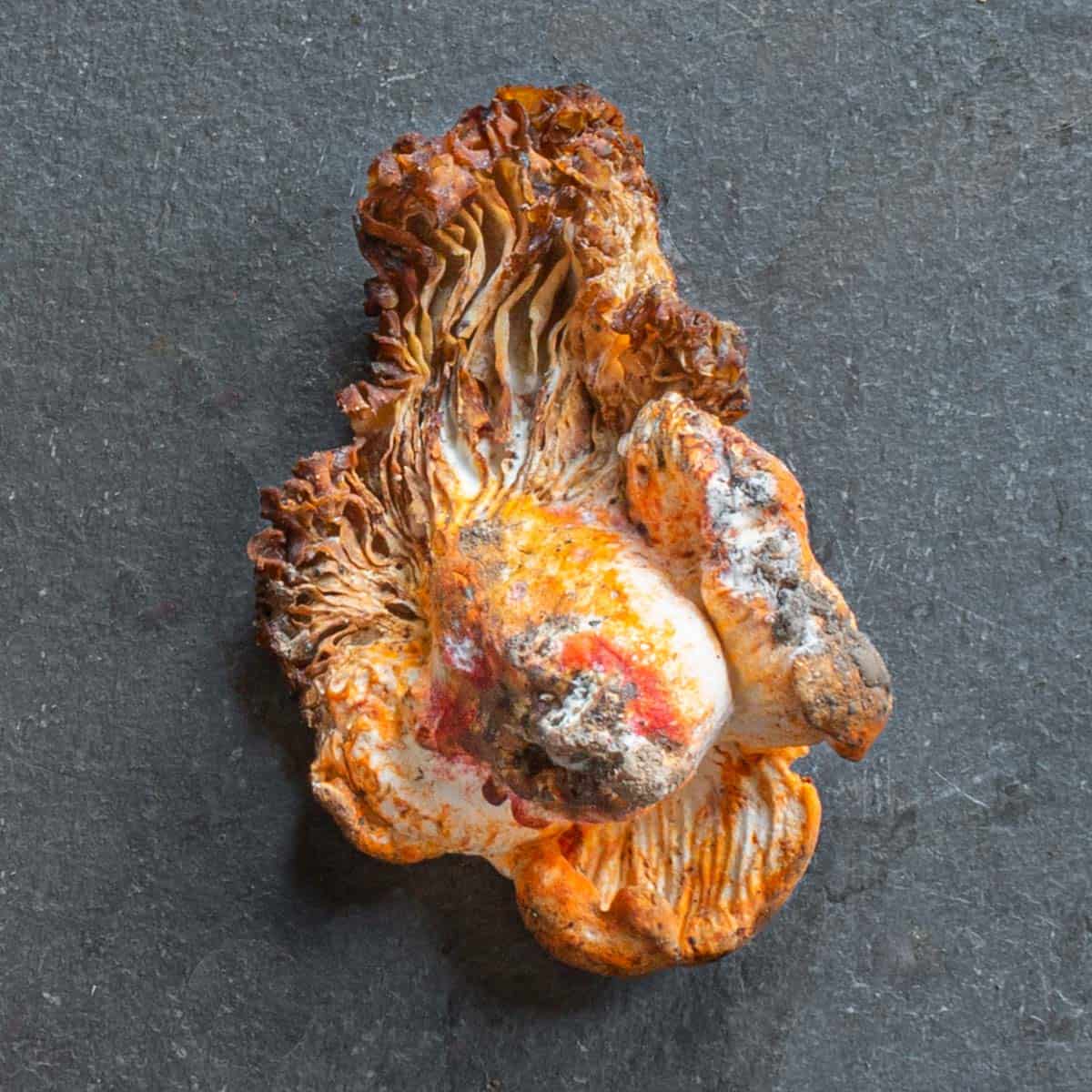
Where to Find Lobster Mushrooms
To find wild lobster mushrooms, you need to find places where Russula or Lactarius mushrooms grow. In the Midwest, lobsters grow in mixed woods. To find the best host mushrooms, it helps to look for big white ones like Russula brevipes and Lactarius piperatus.
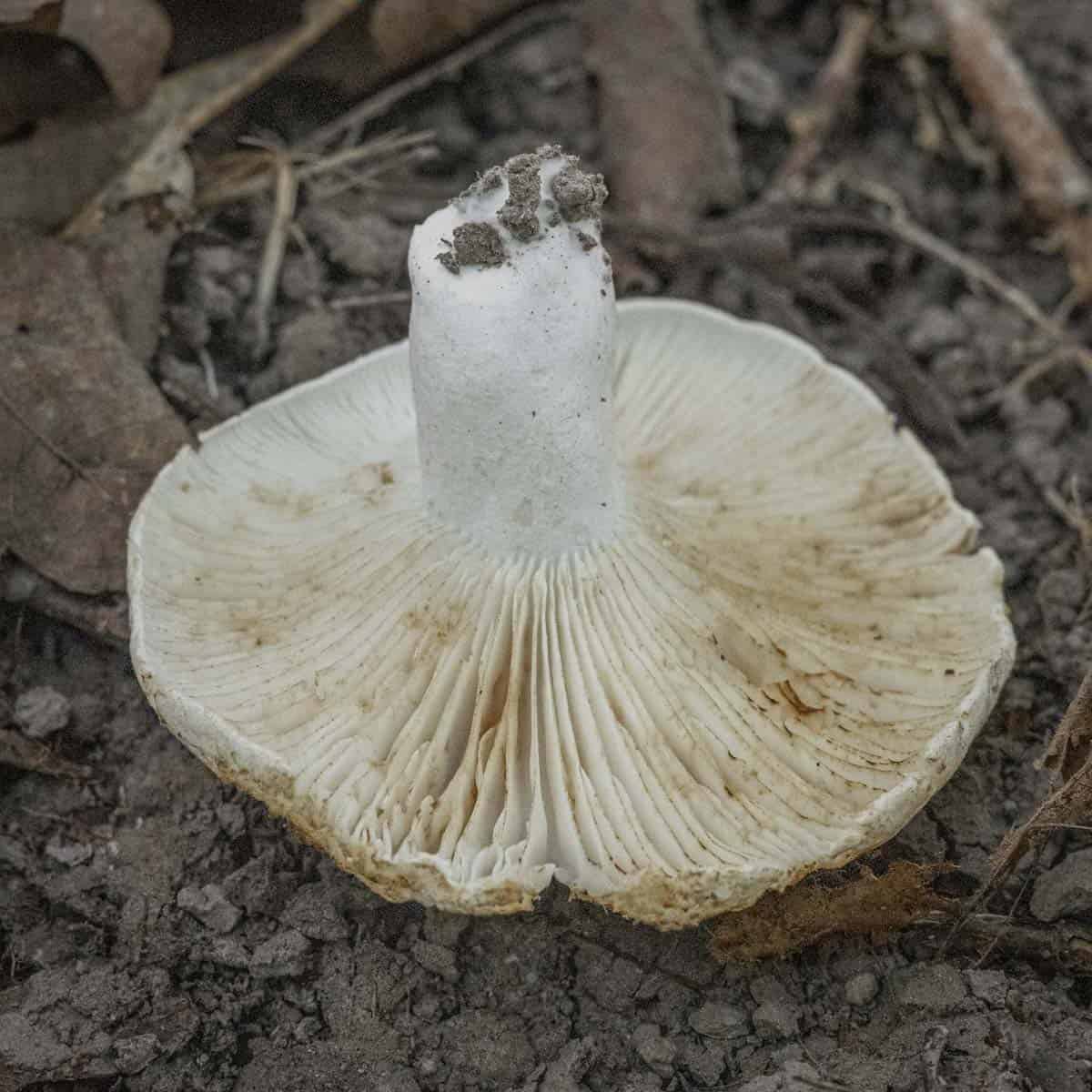
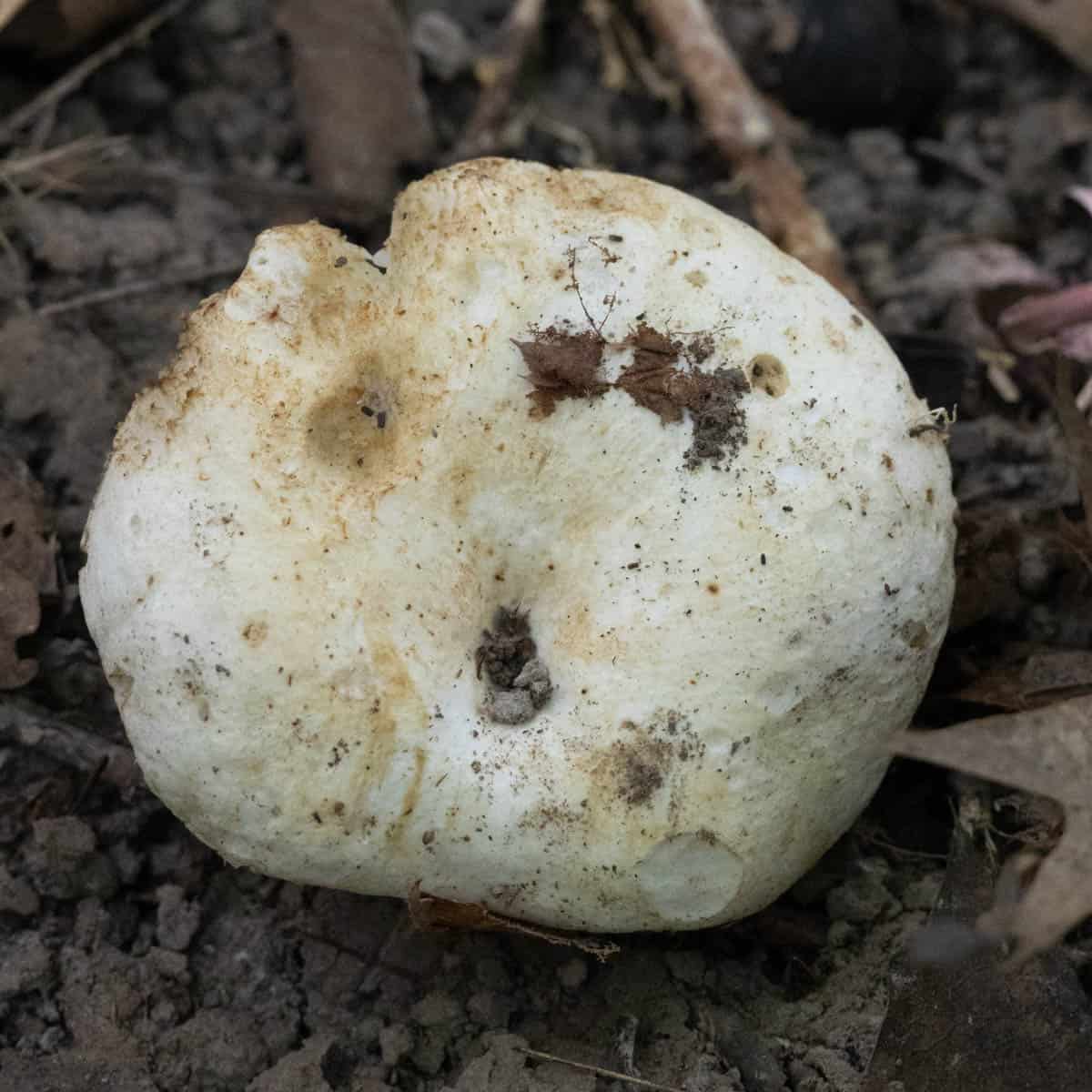
In Northern Minnesota, I find them in mixed woods with birch, aspen and red pine. In Southern Minnesota they like mixed hardwood and oak forests.
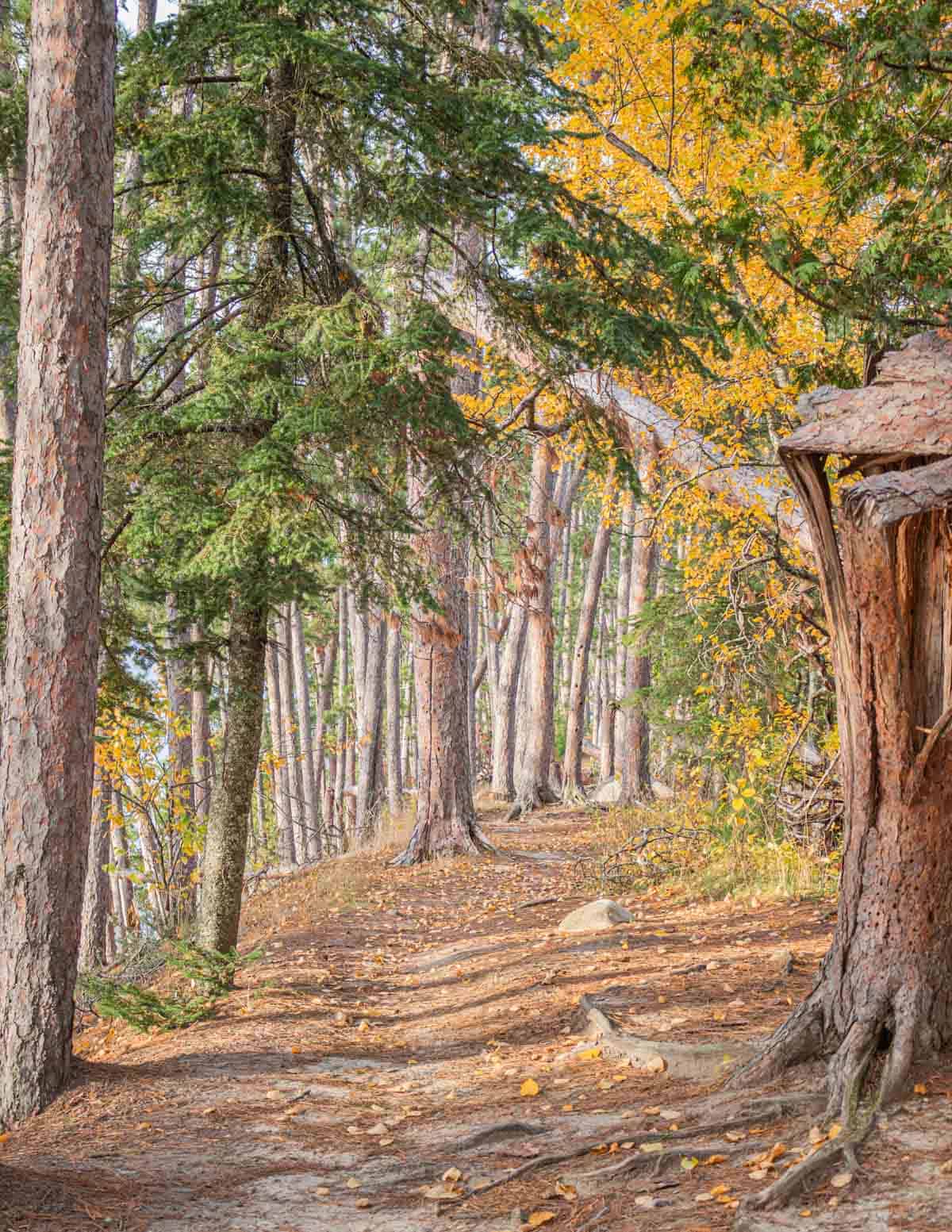
In the Midwest, lobster fungi season will start around mid summer (late July-August) and can go through September. In the Pacific Northwest where they may grow with Ponderosa pine, the season will go longer into November. Theyre sold commercially in the fall.

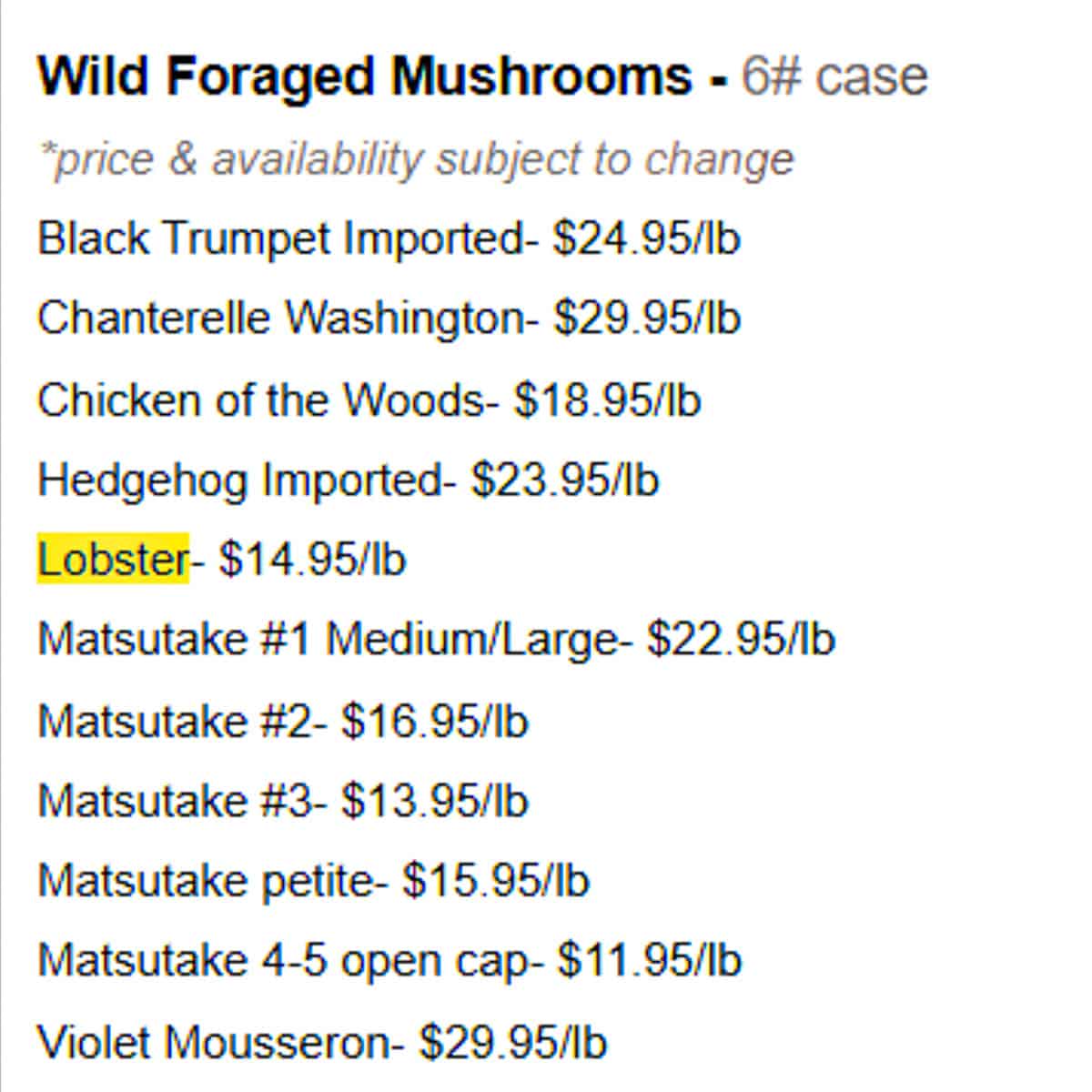
How to Cook Lobster Mushrooms: Braised with Wine & Thyme
How do you cook lobster mushrooms?
Cooking: The next step in learning how to prepare lobster mushrooms is mastering the art of cooking them. These mushrooms can be sautéed, roasted, or even grilled. For a simple sauté, heat some oil or butter in a pan over medium heat. Add the mushrooms and cook for approximately 5-7 minutes, or until they’re tender and slightly golden.
What are lobster mushrooms?
Lobster mushrooms are large, white-capped mushrooms bearing a red fungus that gives them a taste and texture similar to lobster. Learn more about how to identify, clean, and prepare these succulent mushrooms. Lobster mushrooms are large, white-capped mushrooms bearing a red fungus that gives them a taste and texture similar to lobster.
How do you clean lobster mushrooms?
When picking, trim the dirty ends from the lobsters, use a dry brush to clean, then carve out the middle and any soft tissue using your knife. At home, wash the mushrooms with cold water, then dry on towels. After cleaning, store the mushrooms in a Zip Loc bag with a dry paper towel. You may run into mushrooms that haven’t been fully parisitized.
How do you cook lobster mushrooms in a crock pot?
Slice lobster mushroom into thin slices (about ¼ inch thick). Bring water to rolling boil. Salt water (optional). Add pasta to water and cook for 7-12 minutes or until pasta reaches your desired texture. Strain and set aside. Add butter and olive oil to sauté pan, bring to medium-high heat.
